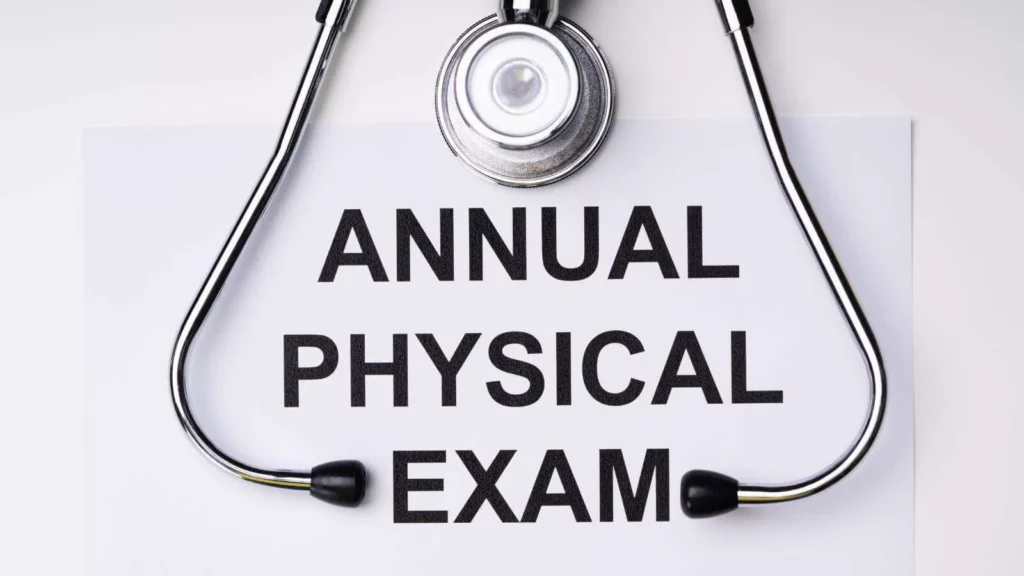The annual physical for women vs men involves distinct differences. When it comes to maintaining your health, an annual physical exam is an essential practice. It’s an opportunity for doctors to evaluate your overall health, catch any early signs of illness, and guide you on maintaining a healthy lifestyle. However, understanding these gender-specific components is key to ensuring a comprehensive approach to your health. In this article, we’ll explore the unique factors of annual physicals for both women and men, explain why they matter, and help you make the most of your check-up.
Table of Contents
ToggleWhat to Expect in an Annual Physical for Women and Men
An annual physical is more than just a routine visit to the doctor. It’s a comprehensive health check designed to ensure you’re in optimal health. While both women and men will undergo similar fundamental tests, such as blood pressure checks, cholesterol screenings, and blood work, the specific exams and recommendations can differ depending on gender.
For both women and men, an annual physical typically includes:
- Blood pressure measurement
- Heart health evaluation (cholesterol and blood tests)
- Kidney and liver function tests
- Physical examination, including a general health check
However, let’s dive into the unique aspects of annual physicals for both genders.
Annual Physical for Women: Key Components
Women have health needs that are influenced by reproductive, hormonal, and even societal factors. Here’s what women can expect during an annual physical:
1. Reproductive Health Screening
One of the most important distinctions in women’s physical exams is reproductive health screening. These tests typically include:
- Pap Smear & Pelvic Exams: Starting at age 21, women are generally recommended to have a Pap smear to screen for cervical cancer. The frequency of the test may vary depending on age and previous results.
- Mammograms for Breast Cancer Screening: Women over 40, or those with a family history of breast cancer, may be encouraged to undergo mammograms.
2. Hormonal Health Assessments
Hormonal imbalances are another key area of focus. Tests related to thyroid function, estrogen levels, and other hormones may be conducted, especially for women who are approaching menopause or those with irregular cycles.
3. Bone Health
Women are at an increased risk for osteoporosis. A bone density test is typically recommended starting at age 65, or earlier for women with specific risk factors.
4. Mental Health Screening
Mental health discussions, including screenings for depression, anxiety, and other conditions, are becoming more integrated into annual physical exams. Women’s physical exams often include an evaluation of mental well-being, which is just as important as physical health.
Annual Physical for Men: Key Components
Men’s health screenings also have their own focus areas, often tailored to address gender-specific health risks. Here’s what men can expect during their annual physical:
1. Prostate Health Screening
For men over 50 (or earlier for those with risk factors), prostate cancer screenings are recommended. This can include a digital rectal exam (DRE) or a prostate-specific antigen (PSA) blood test.
2. Cardiovascular Health
As men tend to face a higher risk of heart disease earlier than women, cardiovascular health is a priority. Common tests include cholesterol screenings, blood pressure checks, and assessments of overall heart health.
3. Testosterone Levels
For older men or those experiencing symptoms such as fatigue, muscle loss, and weight gain, testosterone tests might be performed to check for testosterone deficiency.
4. Mental Health Evaluation
Mental health is also crucial for men, though it is often less discussed. During their annual physical, men should expect screenings for depression, anxiety, and other conditions, as men are less likely to seek help for mental health issues.
Gender-Specific Health Risks
The distinctions between the annual physicals for men and women are not just about tests but also about gender-specific health risks. For example:
- Women face a higher risk of osteoporosis, autoimmune diseases, and cancers like breast and ovarian cancer. Hormonal changes (like those associated with pregnancy, menopause, and menstruation) also play a significant role in women’s health.
- Men have a greater risk of heart disease, prostate cancer, and testosterone-related issues. They’re also more likely to engage in certain risky behaviors, such as smoking or excessive alcohol consumption, which can impact their health.
Why These Differences Matter
Understanding the distinct differences between Annual Physical for Women vs Men is important for several key reasons:
- Early Detection: Gender-specific screenings help detect conditions early when they are more treatable. By identifying health issues sooner, both women and men have a better chance of successful treatment.
- Targeted Advice: Healthcare providers can offer more tailored advice based on gender-related risk factors, whether it’s lifestyle changes, preventive measures, or mental health support.
- Proactive Health Management: By understanding the unique aspects of their annual physicals, men and women can better manage their health and take steps to prevent future complications.
Actionable Tips for Your Annual Physical
Now that you understand the differences between physicals for women and men, here are some actionable tips to maximize the value of your check-up:
- Be Ready to Discuss Family Health History: Be prepared to share any relevant family medical history, such as heart disease, cancer, or mental health disorders. This helps doctors customize your screening process.
- Schedule Regular Check-ups: Don’t wait for something to feel wrong, make your health a priority by scheduling regular check-ups with your doctor.
- Ask Questions: Be sure to ask your doctor about any specific health concerns or issues you’ve been experiencing. Take advantage of this opportunity to discuss reproductive health, heart disease, mental health, and more.
- Don’t Skip Screenings: Both men and women should stay on top of essential screenings. For women, this might mean mammograms or Pap smears, and for men, it could mean prostate exams or cholesterol tests.
- Consider Lifestyle Adjustments: Use your visit as a chance to talk about diet, exercise, and stress management. Gender-specific advice can help optimize these changes for a healthier life.
Conclusion on Annual Physical for Women vs Men
Understanding the unique components of annual physical exams for women and men can ensure that you stay proactive about your health. Regular check-ups allow for early detection, personalized care, and ultimately better overall health outcomes. Don’t delay your next physical exercise today and take control of your health!
Are you ready to take charge of your health? Don’t wait for a sign, take the first step today with a comprehensive annual physical tailored to your needs. Book your appointment now with Macie Medical, where we provide gender-specific care designed to address your unique health concerns.
 Skip to content
Skip to content

